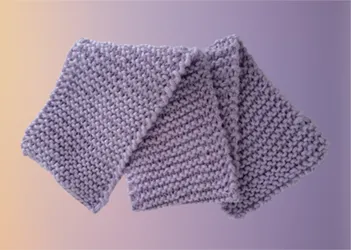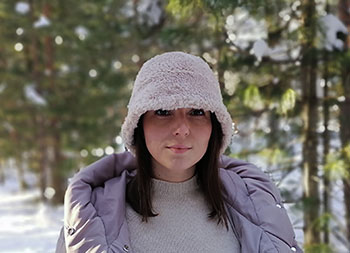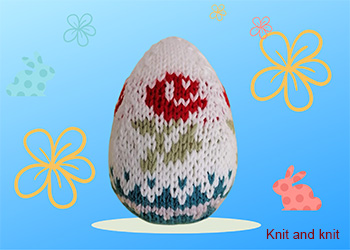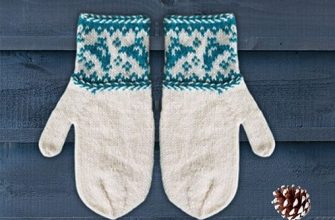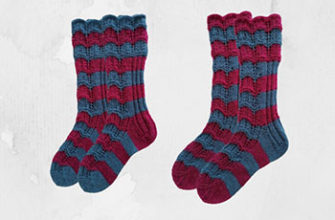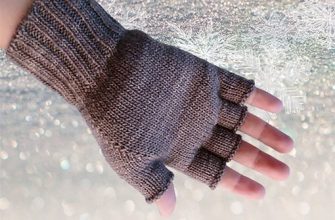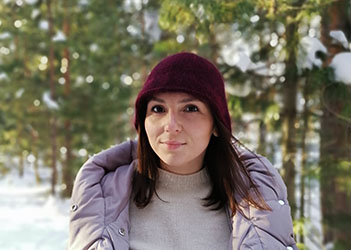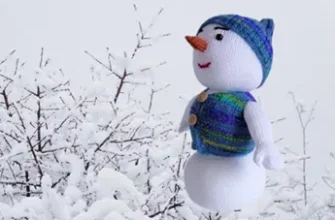A knitted scarf gives the first skills and invaluable experience in knitting to most beginner craftswomen.
Due to its simplicity of construction, a knitted scarf is considered an ideal item for a first knitting experience.
- Knitted scarf — where to start knitting a scarf with knitting needles
- Choosing a pattern for a knitted scarf
- The choice of yarn and knitting needles for knitting a scarf
- Knitted scarf size
- Calculations for knitting a scarf
- How many stitch to cast on a scarf
- Number of rows in a knitted scarf
- How much yarn do you need to knit a scarf
- Children’s knitted scarf with a step-by-step description for knitting
- Knitted scarf from sectional yarn
Knitted scarf — where to start knitting a scarf with knitting needles
First you need to decide for whom you are going to knit a scarf.
It is easiest to start with a baby scarf, as small items are much easier to knit. And waiting for the finished result will not be so tiring.
For a simple children’s scarf just over a meter long, one skein of thread is enough. Therefore, if the finished work does not look very attractive, it will be much easier to part with it.
Choosing a pattern for a knitted scarf
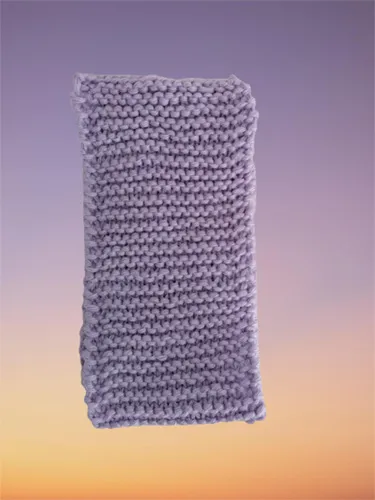
For knitting a scarf, you can choose any pattern. But you need to take into account the fact that the scarf does not have a front and back side.
In their products, skilled craftswomen can use complex patterns, the intricacies of which even experienced knitters will not always be able to make out.
But for starters, in order to gain experience in knitting and fill your hand, it is better to choose simple patterns.
The most optimal solution for beginner craftswomen is garter stitch.
For the subsequent experience, a rib, a riсe or a checkerboard is suitable.
Despite the seeming simplicity, it will be more difficult to knit a scarf with a front stitch. The stockinette stitch is quite capricious and prone to twisting. In addition, it looks different from the front and the wrong side. But still, in the arsenal, knitters have special techniques for knitting scarves with stockinette stitch. It could be:
- Scarf knitted in a circle.
- Double sided stockinette stitch.
- Double jacquard.
Having mastered the simplest knitted scarves, you can proceed to more complex knitting projects.
The choice of yarn and knitting needles for knitting a scarf
A knitted scarf does not require expensive materials; it can be knitted from ordinary yarn with the simplest knitting needles.
But before you start knitting, you should familiarize yourself with the basic rules for choosing yarn:
- For beginner craftswomen, it is better to use inexpensive yarn containing artificial fibers or acrylic.
- Too bright or dark tones quickly tire the eyes, so these shades are unlikely to be suitable for beginners.
- The best option would be yarn of medium thickness or semi-thick yarn with parameters of 170-250 meters in 100 grams. From thick yarn, hands get tired too quickly, and from too thin, also eyes.
- For the first projects, it is better to use a variegated yarn or yarn with a print, which will help hide the unevenness of the first loops.
It is better to knit scarves with straight knitting needles with a standard length (35 cm). The manufacturer’s recommendations on the yarn label or an experienced salesperson in the store will help determine the thickness of the knitting needles.
Do not worry that you will not guess with the № of knitting needles, because the size of the scarf does not require special precision, like a hat or sweater.
When knitting a scarf, you can relax and skip knitting a control sample pattern, which is considered a mandatory step when creating more complex projects.
For the first projects, you should not choose too expensive knitting needles, you can do this when you become an experienced knitter.
Knitted scarf size
In order to determine what size to knit a scarf, the easiest way is to take an old scarf and measure its length and width. If necessary, the measurements can be amended.
You can also use the standard sizes that are used in mass production. Professionals select sizes based on the average parameters of the human body.
| Scarf type | Scarf length (inch/cm) | Scarf Width (inch/cm) |
| Children’s scarves (for a child under 3 years old) | 47 — 63 120 — 160 | 4 — 6 10 — 15 |
| Children’s scarves (for a child over 3 years old) | 47 — 63 120 — 160 | 6 — 8 15 — 20 |
| Women’s scarves | 67 — 75 170 — 190 | 10 — 11 25 — 27 |
| Men’s scarves | 75 — 87 190 — 220 | 10 — 11 25 — 27 |
Of course, a Knitted scarf does not require an exact match to generally accepted sizes, but if you are going to knit a scarf with knitting needles, then you should consider a few simple things:
- A scarf that is too narrow will not cover the throat well and will not be able to properly protect against the weather.
- A wide scarf will make outerwear too tight, it will hinder movement and cause discomfort.
- A short scarf will slip all the time. If you prefer to wear a scarf over a coat, then it will not be possible to tie it.
- A long scarf will peek out from under the outerwear, giving the look a messy look.
I hope that you will agree with me that before picking up the knitting needles, you should decide what size your knitted scarf will be. The size of a scarf directly depends not only on the height and size of a person, but also on what clothes this scarf will be worn with.
Calculations for knitting a scarf
After you decide on the sizes, you can start calculating the loops, rows and the number of skeins of yarn for knitting.
The number of stitches you need to cast on to knit a scarf in a simple pattern depends on two things:
Scarf width.
The thickness of the thread from which the scarf will be knitted.
Take for example the yarn «Astra» with the parameters:
Yarn length 50 g/(98 yd = 90 m) = 100 g/(197 yd =180 m)
Knitting density 3,94 inch * 3,94 inch (10cm * 10cm) = 18 st. * 24 r.
Recommended needle size 8 us = 5 mm.
How many stitch to cast on a scarf
Since the size of the scarf does not require much precision, like a hat or sweater. When determining the density of knitting, it is enough to follow the manufacturer’s recommendations.The easiest way is to determine the number of loops for a children’s scarf 3,94 inch = 10 cm wide. Taking the knitting density from the yarn label, we collect 18 stitch.
For wider scarves, you will have to do the calculations.
The number of stitchs can be determined by multiplying the width of the product by the knitting density.
For scarf width:
6 inch (15 cm) you need to cost 27 stitch — 27 st. = 6 inch (15 cm) * (18 st / 3,94 inch (10 cm));
8 inch (20 cm) — 36 st. = 8 inch (20 cm) * (18 st / 3,94 inch (10 cm));
10 inch (25 cm) — 45 st = 10 inch (25 cm) * (18 st / 3,94 inch (10 cm));
11 inch (27 cm) — 49 st = 11 inch (27 cm) * (18 st / 3,94 inch (10 cm)).
Similarly, you can determine the number of lstitch for a scarf of any width and knitting density.
Number of rows in a knitted scarf
The number of rows of a knitted scarf is determined by analogy with the number of stitchs — the length of the scarf is multiplied by the knitting density (the number of rows is 3,94 inch = 10 cm).
For a scarf 47 inch (120 cm) long, you need to knit 288 r = 47 inch (120 cm) * (24 r. / 3,94 inch (10 cm))/
For other sizes, you can calculate the rows yourself or use our online calculator , which will do all the calculations for you.
It is important to remember that knitted scarves, when worn under their own weight, stretch in length by about 10%.
Therefore, do not be upset if, when knitting, your scarf turned out to be a few centimeters shorter.
How much yarn do you need to knit a scarf
Calculating the amount of yarn is much more difficult than determining the number of loops and rows, so for knitting a scarf, we will use ready-made tables for the consumption of medium-thick yarn and semi-thick yarn.
| Scarf Width | Number of skeins weighing 50 g | Number of skeins weighing 100 g |
| 3,94 inch (10 см) | 2 | 1 |
| 6 inch (15 см) | 2 — 3 | 1 — 2 |
| 8 inch (20 см) | 3 — 4 | 2 |
| 10 inch (25 см) | 4 | 2 |
| 11 inc (27 см) | 4 — 5 | 2 — 3 |
Children’s knitted scarf with a step-by-step description for knitting
Children’s knitted scarf in garter stitch are considered a universal accessory for knitting. Such models for simplicity and speed of manufacture are chosen not only by beginners, but also by experienced knitters.
Finished product dimensions:
- Width = 4 inch (10 cm), length = 47 inch (120 cm);
- Width = 6 inch (15 см), length = 47 inch (120 cm).
Materials:
- Yarn: Astra, Merino love. (100% merino wool, 50 gr. / 90 m) — 2 skeins of light lilac color.
You can take any other yarn with similar parameters. - Straight knitting needles 7 us (4.5 mm).
- Hook 7 us (4.5 mm).
- Scissors.
Knitting density: 18 st. * 24 r. = 3,94 inch x 3,94 inch (10 cm x 10 cm).
Work sequence:
Step 1: Place two needles together and cast on 18 (27) sts in the classic way.
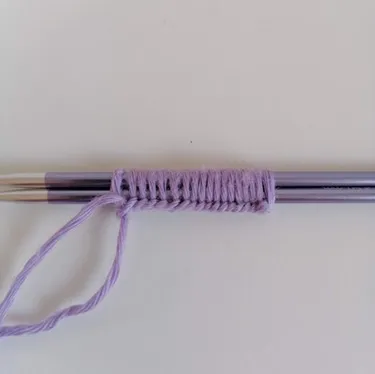
Step 2: Carefully pull one needle out of the cast.
Step 3: Knit all stitches on the first row. Expand work.
4th step: In the second row, remove the 1st loop not knitted. Then knit to the end of the row with facial loops.
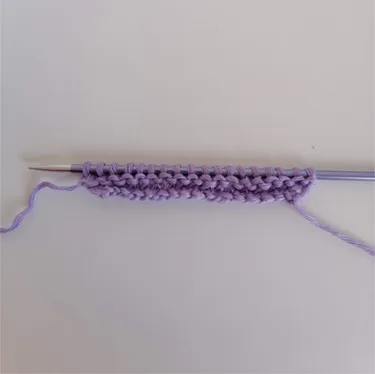
Step 5: Repeat Row 2 until scarf measures 47 inch (120 cm).
6th step: Close the loops in the classical way: * knit 2 stitchs together with the front. Put the resulting stitch on the knitting needle with stitchs. Repeat until the end of the row. Pull the end of the thread through the last stitch and tighten.
7th step: hide the ends of the threads with a hook.
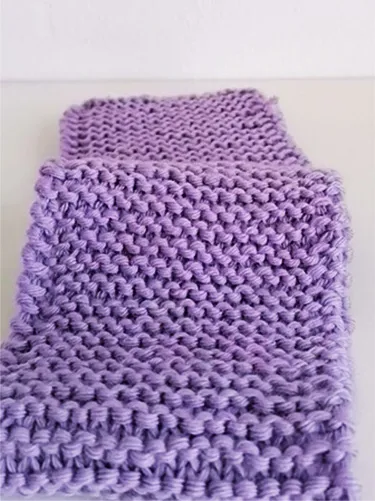
8th step: Wash the scarf in cool water using a special detergent. This will help to wash off the remnants of chemicals and factory dust from the scarf.
9th step: Dry the scarf flat on a flat surface.
Also watch video:
Knitted scarf from sectional yarn
Working on a beginner’s scarf pattern becomes enjoyable when you choose a self-striping yarn such as Caron Cakes in the delightful shade of Bumbleberry.
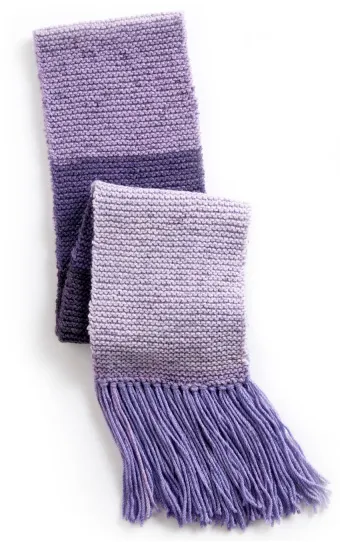
Materials:
- Caron® Cakes™ (7.1 oz/200 g; 383 yds/350 m) Bumbleberry (17016) 1 ball. Contents: 80% acrylic, 20% wool.
- Size U.S. 8 (5 mm) knitting needles or size needed to obtain gauge.
Measurements: Approx. 7″ x 70″ [18 x 178 cm], excluding fringe.
GAUGE: 17 sts and 32 rows = 4″ [10 cm] in garter stitch.
INSTRUCTIONS
Cast on 30 stitches (sts).
Knit every row (garter stitch) until work from beginning (beg) measures 70″ [178 cm].
Cast off.
Fringe
Cut strands of yarn 18″ [45.5 cm] long. Taking 2 strands together (tog), fold in half and knot into fringe across ends of Scarf. Trim fringe evenly.
I hope that our simple instructions for knitted scarf will help novice craftswomen decide on the choice of pattern, yarn, color, knitting needle number and scarf size.
Read also: How to Knit a Heart Softie.

